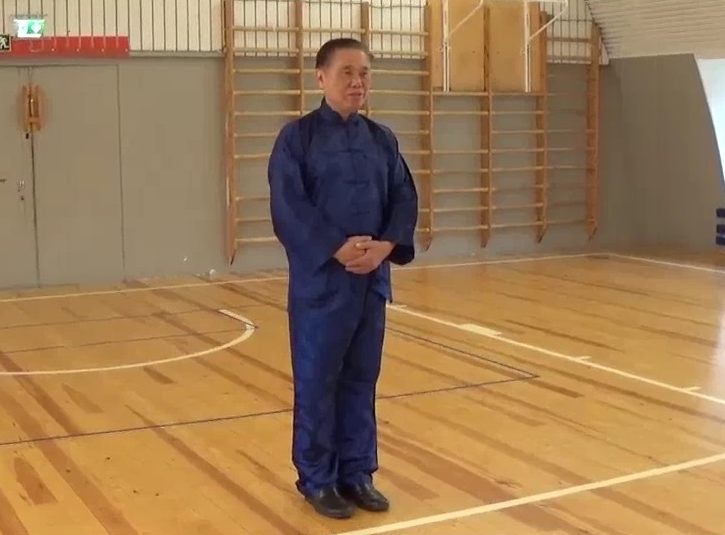DAN TIAN OR ELIXIR FIELD

Dan Tian or Elixir Field
Question
I am currently undertaking a six month practice of the basic exercises in your book, “Introduction to Shaolin Kung Fu”. You say that practising the horse stance lowers the centre of gravity. I am wondering if taking part in activities such as swimming where balance is more or less forgotten affects the centre of gravity.
-- Chris, UK
Answer
Three factors influence one's centre of gravity: his state of mind, his energy balance, and his physical position. Theoretically, even when a person is physically well balanced, but if his mind is so powerful that he can focus a lot of energy to a finger tip, then his centre of gravity is at the finger tip. But in practice and for most people, it is his physical position that determines where his centre of gravity is located.
If a person stands upright and is perfectly relaxed, even if he is untrained in any art, his centre of gravity is naturally focused at a point about two or three inches below his navel, at a vital point called qi-hai, or “sea of energy”. It is so called because his qi (chi) or vital energy is focused there naturally. This qi-hai vital point is often also called dan-tian, which means “elixir field”. His shen, which is spirit or consciousness, may also be focused there. That is why some spiritual disciplines regard this vital point as the spiritual centre too.
But most people do not stand upright, and are not perfectly relaxed. Many people stand with their toes pointing outward, and leaning back slightly. If they were perfectly relaxed, they would fall over because their centre of gravity has shifted from their dan-tian to their back. But they would not fall, because they tense their back muscles and leg muscles to support themselves. They are so used to this tension that they normally are not aware they are tensed.
Even if they stand upright and are physically relaxed, they are not relaxed emotionally and mentally (or in chi kung terms, energetically and spiritually). They are often excited or nervous, or experience other negative emotions, thus causing their vital energy to float upward. They also think of myriad thoughts constantly. This causes their spirit to be dissipated. But most people are unaware of such subtle activities going on inside them.
Practising the horse-riding stance is an excellent way to over these problems. The form of the stance itself lowers your spiritual focus as well as your energetic focus to your dan tian. At first you would be physically tensed, as you are not used to sustaining the form. But with practice and as your energy flows, you can be physically relaxed. Hence you attain a one-pointedness of mind, energy and form. When you understand this, you will understand why the horse-riding stance is so important; it is not just a physical exercise to strengthen your leg muscles, but involves all your three components of form, energy and mind.
Once you have acquired the skill of focusing your mind, energy and form at a point through horse-riding stance training, i.e. once you have achieved a unity of “jin”, “qi” and “shen”, you can apply the same skill to any forms or movements, such as to swimming, combat application or your daily work. It is a mistake to say that you forget about your balance in swimming or in any other activities like playing games or writing your examination answers.
When you swim, your physical centre of gravity may or may not be at your dan tian. In fact it is good to keep your physical centre of gravity at your dan tian when you swim or are engaged in other physical activities, as this will give you good balance and gracefulness. But even if your physical centre of gravity is elsewhere, such as when you perform an acrobatic kungfu movement, you must always maintain your focus and balance. This is even more important when you perform mental work. Many people have expressed amazement at how I could produce so much work. An important reason is that I always have focus and balance as a result of my kungfu training.
The above is taken from Question 7 of May 2002 Part 2 of the Selection of Questions and Answers.
LINKS
Courses and Classes
